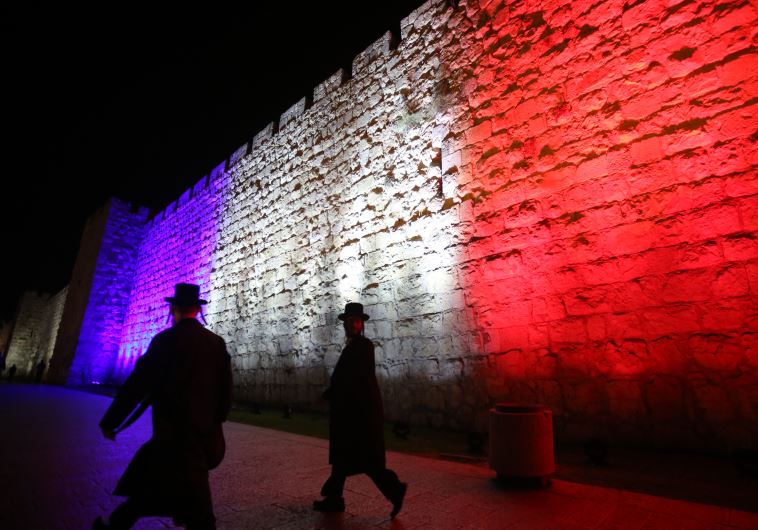Think again: The vision of Avraham
Few French rabbis have made aliya along with their congregants, as they have seen their primary responsibility to those still remaining in France.
 Wall of Jerusalem's old city lit up in colors of French flag(photo credit: MARC ISRAEL SELLEM/THE JERUSALEM POST)
Wall of Jerusalem's old city lit up in colors of French flag(photo credit: MARC ISRAEL SELLEM/THE JERUSALEM POST)